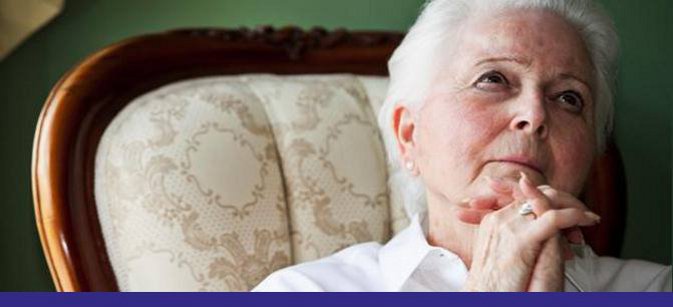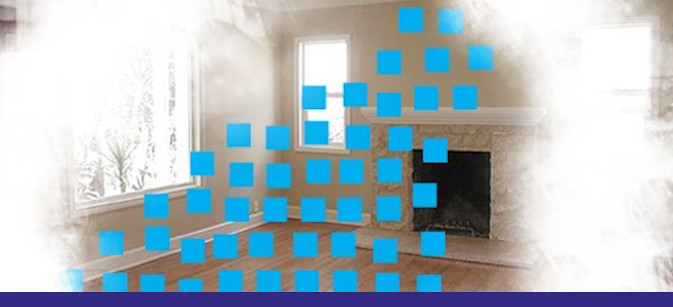What is the cause of CBS?
The short answer is that nobody really knows.
There is believed to be a strong link between sight loss and CBS. The vast majority of people living with CBS have some form of vision loss. It is believed that CBS is principally about how the brain responds to this deterioration of vision.
The brain is used to receiving visual information via the eyes. When, as a result of vision loss, the visual input drops, the brain reacts by becoming restless. Modern brain scanning equipment has confirmed that when a CBS-affected person 'sees' a phantom image, specific cells within the visual region of the brain are over-active and firing spontaneously. It is this firing that seems to be producing the CBS images. Interestingly, the person experiences such imagery as external (ie. part of their environment).
Some have likened CBS to phantom limb syndrome whereby a person still 'experiences' their amputated limb well after it has been lost. It is argued that the nerve pathways to the brain from the amputated region remain healthy and intact. Neuronal (brain) cells devoted to that specific amputated area can fire spontaneously which the person experiences as felt sensations (from the lost limb).
However, the sensory deprivation type theory does not explain why only some people living with eye disease will experience CBS while others do not. It is suspected that the missing link lies somewhere in the brain but exactly where and how this occurs remains unknown.
Is there a test for CBS?
Currently, there is no form of test (eg. blood, urine, biopsy, optical, fMRI scan) that can provide a positive reading for CBS. A CBS diagnosis is typically arrived at by excluding all other medical explanations for the visions. This can include neurological possibilities, side effects of prescribed medication or some form of psychiatric illness.
While there is no agreed upon set of signs for CBS, its core features seem to be:
- Some form of vision impairment
- Existence of repeated phantom images
- Understanding that what one 'sees' is not, or cannot be, real. (ie. no delusions)
- Thinking and memory remain sound
- Visual phantom images are silent (ie. not heard, tasted, felt or smelt)
How many people have CBS?
No one knows the true number of people affected.
Comprehensive studies of large samples of vision-impaired people have not yet been undertaken. Studies normally mention that the condition is under-reported and under-recognised so current estimates are probably conservative.
A Danish study (2022) has estimated that 47.2 million people are living with CBS worldwide. This may well be a conservative figure given that: (a) the study only included people over the age of 40 and we know that CBS affects younger populations and (b) they suggested 19.7% (or one in 5 people) are affected when the figure may well be closer to one in three (see below).
Many clinical studies over the past 30 years have suggested that somewhere between 12% - 20% of all vision-impaired people will experience CBS. However, in more recent times, a new CBS picture is emerging:
- Gilmour et al (2009) found a prevalence rate of 34%
- Abbott et al (2007) noted 40%
- A 39% figure was reported by Cox & ffytche (2014)
- O'Hare et al (2015) published a prevalence rate of 37.5%
- One study (2005) even reported an astonishing 63%
The great variation in reported prevalence rates is due to numerous factors including:
- differences in the population studied
- the degree to which patients are willing (or reluctant) to disclose their symptoms
- different definitions of what is considered to be CBS
The medical and nursing care staff have not heard of CBS. What can I do?
This unfortunate and frustrating scenario is an all-too-familiar reality across a range of medical and health care settings. One of the best things one can do is to access a position statement on CBS from a formal medical body such as the Royal College of Ophthalmologists and supply this document to the relevant doctor and/or allied health team. You can play an important role in educating medical and health professionals of this largely invisible syndrome.
Click here to download such a position statement.
My mother was recently diagnosed with CBS. How can I help?
Being supportive, non-judgmental and empathic cannot be understated. Providing reassurance to your mother that she is not 'going bonkers' can be incredibly comforting. Reinforcing that she is not losing her mind and that the symptoms are a peculiar by-product of vision loss can reduce anxiety and fear.
Explore ways to help your mother (i) better adjust to her vision loss and (ii) maximise her remaining vision. Contact your mother's local low-vision rehabilitation service provider to explore a range of options that may be beneficial to her. This includes:
- relevant visual aids (eg. anti-glare, night-light, magnifiers)
- mobility assistance
- optimal home lighting
- tips & useful gadgets for everyday tasks
- support groups
- social options
Any of these initiatives can assist your mother feel more empowered to manage daily living tasks. Anecdotal evidence suggests that those who feel more in control of their situation tend to have less frequent CBS experiences.
Don't assume that your mother necessarily wants to be rid of the images. Once she has understood that the condition is not linked to mental illness or dementia, she may well come to appreciate or value the phantom images. For about 15% of CBS cases, the person finds the images pleasant and a welcome addition to their lives. This is because CBS images tend to be far more vivid and detailed than their typical everyday perceptions, which have been dulled by vision loss.
If your mother finds the images annoying, disturbing or unwanted, then encourage her to try various strategies to counter their presence (see CBS Treatments). She is also welcome to call the CBS Foundation if she would like to talk to someone further about her experiences. A range of services are available which may be of interest to your mother (see CBSF Services).
Where all else fails, as a last resort, consider a consultation with an ophthalmologist, neurologist, geriatrician or neuro-ophthalmologist who can explore a pharmacological treatment. Bear in mind though that current medications remain 'hit-and-miss' as no specific drug has been shown to effectively treat CBS symptoms in most, let alone all, cases.
If you choose to go down this path, make sure you ask the prescribing doctor about the possible side effects that could follow from taking the medication so you can make an informed decision whether to proceed.
How long does CBS tend to last?
There are 2 parts to this question:
(a) Episode duration
How long each episode lasts can vary enormously. People living with CBS report that phantom images can last anywhere from a few seconds, minutes through to hours.
How frequently the episodes occur also has a large range. For some, it may be a rare and fleeting monthly experience while for others the imagery can appear often on a daily basis.
(b) Syndrome duration
How long the syndrome lasts is hard to answer. The phantom images spontaneously appear and they eventually spontaneously disappear. The time period between the syndrome commencing and ending varies a great deal: from a few months through to several years.
The long-held view had been that 60% of CBS cases will resolve within 18 months. However in a 2014 study of nearly 500 CBS-affected people, 75% reported that their symptoms continued for over five years. Personal stories shared to the Foundation also indicate that for some people their CBS can last many years, even beyond a decade. This suggests that perhaps the true life-span of the syndrome has been under-estimated.
What type of eye conditions can lead to CBS?
Macular degeneration remains one of the leading risks for CBS (especially in western countries). However, all other forms of vision impairment including glaucoma, cataracts, diabetic retinopathy, retinitis pigmentosa (RP), and even enucleation (eye removal) can lead to CBS symptoms. In fact, damage to any part of the visual system – not just the eye itself - can result in Charles Bonnet syndrome. This includes damage to visual regions of the brain from a stroke or brain tumour.
What remains unknown to this day is why some people with macular degeneration (or any other form of vision impairment) will experience CBS while others do not.
Is there a cure for CBS?
Presently, there is no universally effective cure for CBS.
- Sometimes, improvement in one's vision can bring an end to CBS
- On occasions, use of visual aids and optimal lighting can reduce symptoms
- Sometimes, behavioural interventions can be effective
- At times, increased socialisation can be beneficial
- Occasionally, certain prescribed medications can lead to a rapid end of CBS symptoms
- However, none of the above interventions have been found to work in the majority of cases
Can prescribed medications trigger CBS?
All prescribed medications come with the potential risk of unwanted side effects and one needs to be aware of this possible connection. There are many reported instances where a certain prescribed medication appears to have accidentally triggered CBS-like symptoms. This includes:
- a variety of glaucoma eye drops
- prescribed drugs for high blood pressure and heart-related issues
- heartburn / reducing stomach acid production medication
Carefully note whether an increase in the dosage of a certain drug or the introduction of a newly prescribed medication seems to be linked to a sudden bout of unusual visual experiences. If so, consult your treating doctor to assess more thoroughly.
What tend to be the emotional reactions to the CBS images?
Initially, the experience tends to be a mixture of anxiety and confusion as the affected individual does not know what is suddenly happening to them. In a recent survey of 492 CBS-affected people (Cox & ffytche, 2014), 38% had a 'fear-inducing' response at CBS onset whilst curiosity was also common (36%).
Many people living with CBS report that they were never questioned about, or given any forewarning of, the possibility of Charles Bonnet syndrome by eye health care practitioners. Left to make sense of their 'visions' on their own, worst case scenarios often roam in the person's thoughts. This can lead to persistent fear, distress and even depression. Much of this distress could be alleviated if the person received education about CBS during - or shortly after - their initial eye consultation.
Once the person comes to understand the nature of the syndrome, roughly two thirds (65-70%) come to feel a great sense of relief that they have no mental illness or impending dementia. Knowing they have a recognised medical condition - that is not associated with psychiatric or memory decline - can reduce fears and be incredibly reassuring. Once familiar with the condition, a more neutral emotional response to the CBS imagery is often adopted.
Approximately 15% will continue to find their imagery pleasurable (or of novelty value) as often the imagery is more vivid and detailed than their everyday vision-impoverished world.
Even when one understands the condition, roughly 35% will continue to find the imagery unpleasant, unwanted or stressful. For this latter group, their discomfort can be due to:
(a) the content and/or frequency of the images experienced,
(b) irritation that the imagery is ongoing with no signs of respite or
(c) (ongoing) concerns as to the actual cause of them.
My grandfather has vision loss and reports seeing elves in his home that talk to him. Does he have CBS?
CBS phantom images are only visual. As such, they are typically silent. In fact, some clinicians have included this quality into the diagnostic criteria: that the CBS image is purely visual. Therefore, one does not hear, smell, taste or feel the CBS image.
Even though it is true that elf-like beings are reported by those living with CBS, it is not typical for them to speak. If there is some form of ongoing conversation between the grandfather and the elves then this suggests that he may not have CBS and rather would benefit from a full neurological assessment for other possible medical explanations.
Can multivitamins assist to reduce or prevent CBS?
At this point in time, there is no evidence that any formula of multivitamins can be of assistance.
Two clinical papers from Japan (2009; 2011) reported some success in treating CBS with an ancient combination of seven Asian herbs but follow-up trials replicating these findings are yet to occur.
Is CBS the same as Phantom Vision syndrome?
Yes, essentially they are one and the same thing.
Phantom experiences are quite varied. The most well-known is Phantom Limb syndrome whereby the physical loss of a limb (eg. amputation) is often followed by the experience of phantom sensations from that lost limb. This occurs in a staggering 85-90% of all amputees. These sensations can be quite diverse (eg. sense of posture, weight or movement) and can include discomfort or pain.
Similarly, Phantom Eye syndrome is the experience of a range of phantom (eye) sensations following the removal of the eye.
Phantom Vision syndrome is characterised by phantom imagery (fixed or moving) as a result of some form of damage to the visual system (eg. eye disease). The principal reason why CBS is not called Phantom Vision syndrome is that a neurologist opted to name this specific disorder in honour of the 18th century natural scientist, Charles Bonnet, who first noted the condition.
What all these different forms of phantom experiences share in common is that sadly there is not one single method or treatment that successfully resolves most, let alone all, cases.









